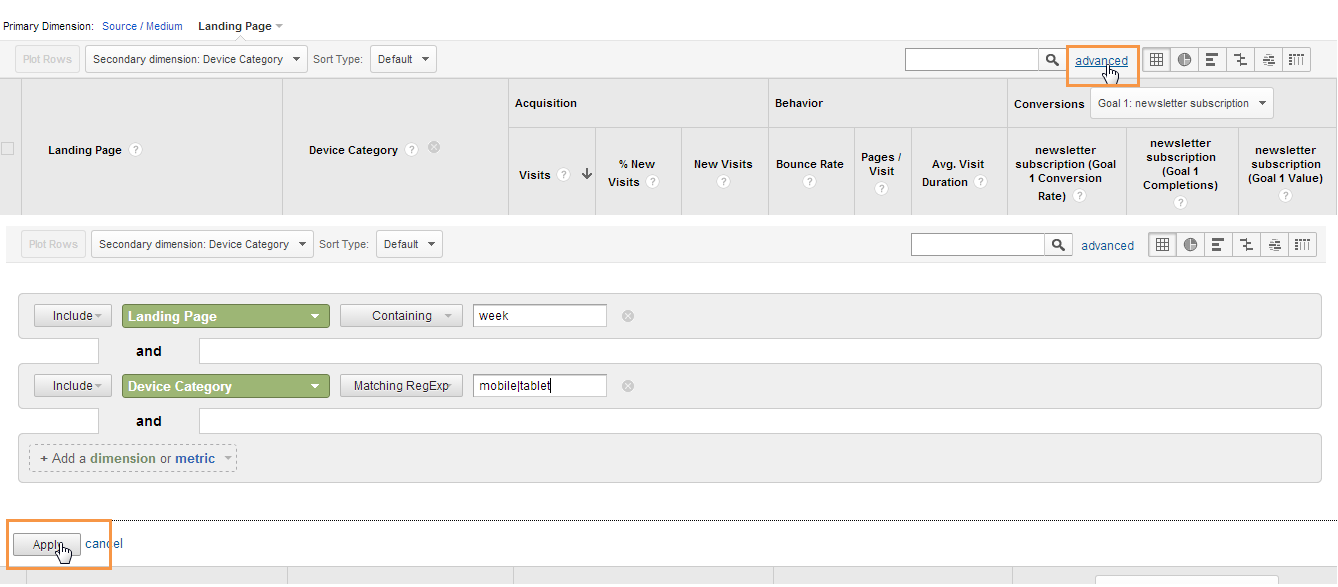Advanced Analytics Techniques: Leveraging Google Analytics Secondary Dimension
Advanced Analytics Techniques: Leveraging Google Analytics Secondary Dimension
Blog Article
Unlocking the Power of Second Dimension Analytics for Boosted Data Insights and Decision-Making
In the realm of information analytics, key measurements commonly take the limelight, however the true depth of insights exists within the world of additional dimensions. By utilizing the power of additional dimension analytics, companies can introduce concealed patterns, discover correlations, and extract extra purposeful final thoughts from their information.
Value of Secondary Measurements
Discovering the relevance of second dimensions in analytics unveils the surprise layers of information insights essential for educated decision-making in numerous domains. Second measurements offer a much deeper understanding of main data by supplying extra context and perspectives. By including additional measurements into analytics, organizations can draw out a lot more nuanced and detailed understandings from their datasets.
One trick significance of second dimensions is their capacity to section and categorize key information, permitting a more thorough analysis of details subsets within a dataset. When looking at the data as a whole, this division enables services to identify patterns, patterns, and outliers that could not be apparent. Additional measurements help in discovering relationships and dependencies between different variables, leading to even more exact forecasting and anticipating modeling - secondary dimension.
Furthermore, additional dimensions play a crucial function in improving information visualization and coverage. By including second dimensions to visualizations, such as graphes or charts, experts can develop more insightful and interesting depictions of information, helping with much better communication of findings to stakeholders. Generally, the combination of additional measurements in analytics is critical in opening the complete possibility of information and driving evidence-based decision-making.
Trick Advantages of Making Use Of Second Measurements
Utilizing second dimensions in analytics provides companies a calculated advantage by boosting the depth and granularity of information understandings. By dissecting data using additional dimensions such as time, area, device kind, or user demographics, companies can uncover patterns, fads, and connections that might or else remain concealed.
Moreover, the usage of second measurements boosts the context in which primary data is translated. By leveraging additional measurements in analytics, companies can harness the complete potential of their data to drive better decision-making and accomplish their business goals.
Advanced Data Analysis Methods
A deep study innovative information analysis methods discloses innovative approaches for removing beneficial understandings from intricate datasets. One such strategy is artificial intelligence, where formulas are used to recognize patterns within information, anticipate results, and make data-driven decisions. This technique enables for the automation of analytical model building, enabling the processing of large quantities of information at a much faster speed than standard techniques.
Another advanced strategy is anticipating analytics, which utilizes analytical formulas and maker understanding strategies to anticipate future results based on historic information. By examining patterns and patterns, companies can anticipate customer actions, market patterns, and potential threats, encouraging them to make positive decisions.
In addition, message mining and belief analysis are valuable strategies for Clicking Here drawing out insights from disorganized data resources such as social networks comments, consumer evaluations, and survey responses. By assessing text information, organizations can recognize client opinions, recognize emerging fads, and enhance their service or products based upon feedback.
Enhancing Decision-Making Via Secondary Measurements

Enhancing decision-making via secondary dimensions allows organizations to make more notified and targeted critical choices. For instance, by segmenting consumer information based on additional measurements like acquiring background or engagement levels, their explanation firms can customize their marketing techniques to details target market segments, resulting in enhanced conversion prices and consumer complete satisfaction. Furthermore, additional dimensions can assist determine connections and connections between different variables, enabling organizations to make data-driven decisions that drive growth and success.
Implementing Secondary Dimension Analytics
When integrating secondary measurements in analytics, companies can unlock deeper understandings that drive critical decision-making and boost general performance. Implementing secondary dimension analytics calls for an organized method to guarantee reliable application of this powerful tool. The very first step is to identify the vital metrics and dimensions that align with the company's calculated goals. This involves recognizing the specific concerns the organization seeks to address and the data factors called for to address them.

Moreover, organizations need to utilize progressed analytics devices and technologies to enhance the procedure of integrating additional measurements. These tools can automate data handling, evaluation, and visualization, allowing organizations to concentrate on translating understandings rather than hand-operated information manipulation.
Final Thought
In conclusion, secondary dimension analytics play a crucial role in enhancing information understandings and decision-making procedures. By making use of innovative information analysis methods and executing secondary dimensions properly, companies can open the power of their data to drive tactical business choices.
In the world of data analytics, primary measurements often take the limelight, however the true depth of understandings exists within the realm of second dimensions.Utilizing second measurements in analytics provides organizations a strategic benefit by increasing the depth and granularity of information understandings. By leveraging secondary dimensions in analytics, companies can harness the full possibility of their information to drive much better decision-making and achieve their organization goals.
Implementing information validation procedures and routine audits can help preserve data top quality and dependability.
By utilizing sophisticated data more tips here evaluation techniques and applying additional measurements successfully, companies can unlock the power of their information to drive calculated business choices.
Report this page